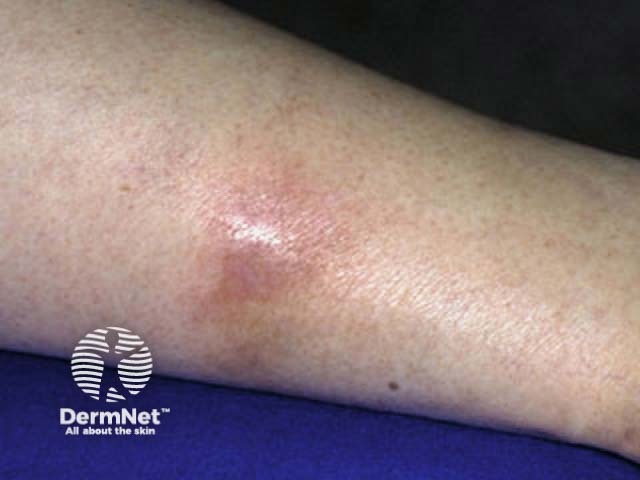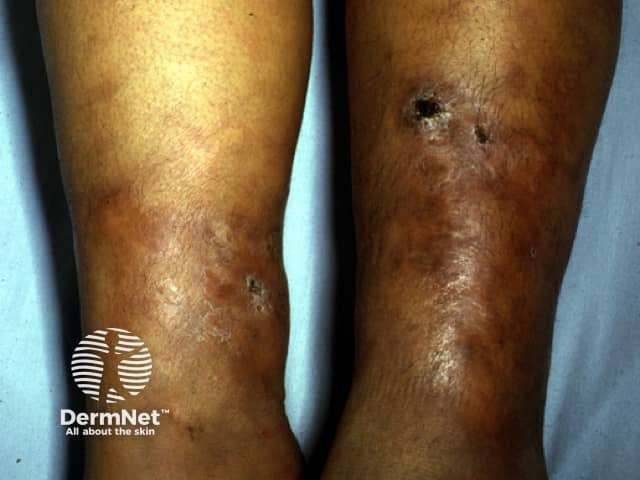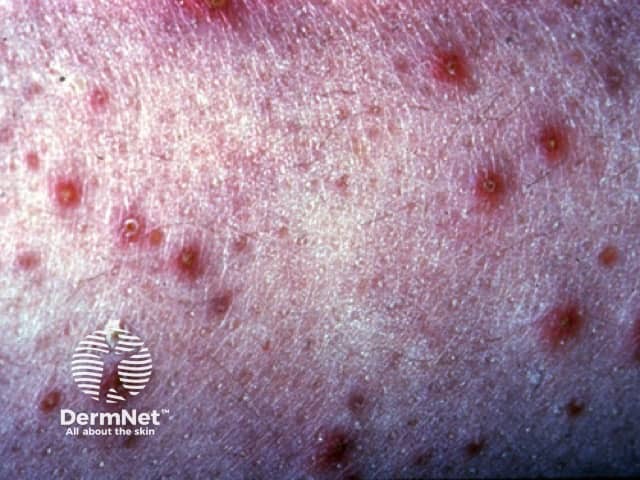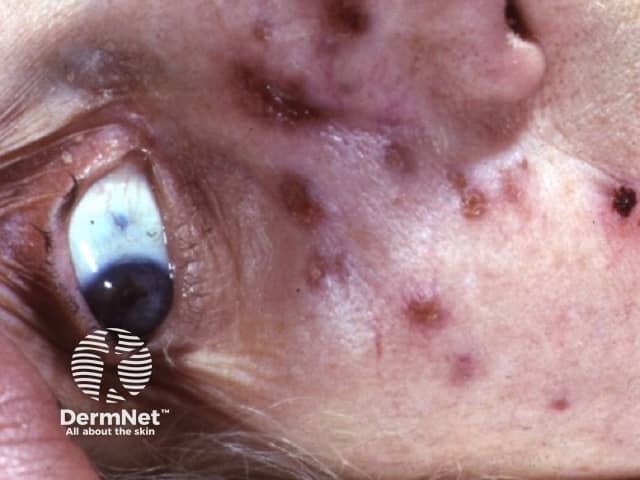Main menu
Common skin conditions

NEWS
Join DermNet PRO
Read more
Quick links
Author: Vanessa Ngan, Staff Writer, 2003. Updated Hon A/Prof Amanda Oakley, August 2015. DermNet Update March 2021. Copy edited by Gus Mitchell.
Introduction
Demographics
Causes
Clinical features
Complications
Diagnosis
Differential diagnoses
Treatment
Outcome
A tuberculid is a hypersensitivity reaction presenting as skin changes in association with tuberculosis elsewhere in the body. Mycobacterium tuberculosis organisms cannot be isolated from the tuberculid skin lesions. Four types of tuberculid are usually recognised: erythema induratum (Bazin disease), papulonecrotic tuberculid, lichen scrofulosorum, and nodular tuberculid, and more than one type of tuberculid may be present.
Tuberculids develop in patients with overt or silent tuberculosis infection and an allergy to or a medium-high level of cell-mediated immunity against the tubercle bacillus. They can sometimes appear after initiating anti-tuberculous treatment or after starting antiretroviral treatment for HIV. Tuberculids are mostly seen in countries where tuberculosis remains common, such as China, the Indian subcontinent, and sub-Saharan Africa.
Tuberculids are usually associated with Mycobacterium tuberculosis infection, but have also been reported less often following BCG immunisation or in association with atypical mycobacterial infections such as M. avium. It is thought to be due to haematogenous spread of mycobacterial antigens to the skin resulting in a type III or type IV hypersensitivity reaction.
Erythema induratum (Bazin disease) is the most commonly recognised form of tuberculid. It typically presents on the backs of the legs of young to middle-aged women as tender or painful indolent blue-red nodules and plaques which may ulcerate and scar.


Cutaneous tuberculosis: Bazin disease

Cutaneous tuberculosis: Bazin disease
Papulonecrotic tuberculid (tuberculosis papulonecrotica) presents as recurring crops of clustered dusky or erythematous papules and nodules that can become pustular or necrotic to form small ulcers that heal with varioliform (chickenpox-like) scarring after about 6 weeks. The skin lesions develop symmetrically mostly on the limbs of children and young adults before the age of 30 years.

Papulonecrotic tuberculid

Papulonecrotic tuberculid
Lichen scrofulosorum (tuberculosis cutis lichenoides) usually affects children and adolescents with tuberculosis of the bone or lymph nodes. It presents as asymptomatic small, slightly scaly, follicular papules on the trunk which can be subtle. The papules are often skin-coloured, but may be yellow or red-brown, and clustered, grouped into an annular arrangement, or coalesced to form plaques, resembling lichen planus or granuloma annulare.

Cutaneous tuberculosis: tuberculid - lichen scrofulosorum
Nodular tuberculid is probably a variant of erythema induratum presenting as asymptomatic dusky-red papules and nodules.
Tuberculids are a complication of tuberculosis. Tuberculid skin lesions can result in:
Rarely, the eyes may also be involved in a tuberculid.
Tuberculids characteristically respond to appropriate multi-drug anti-tuberculous treatment.
Untreated tuberculosis may cause chronic tuberculids with recurrent crops of skin lesions or chronic ulcers. Adequate treatment of the associated tuberculosis infection using appropriate multi-drug anti-tuberculous therapy results in resolution of tuberculids.